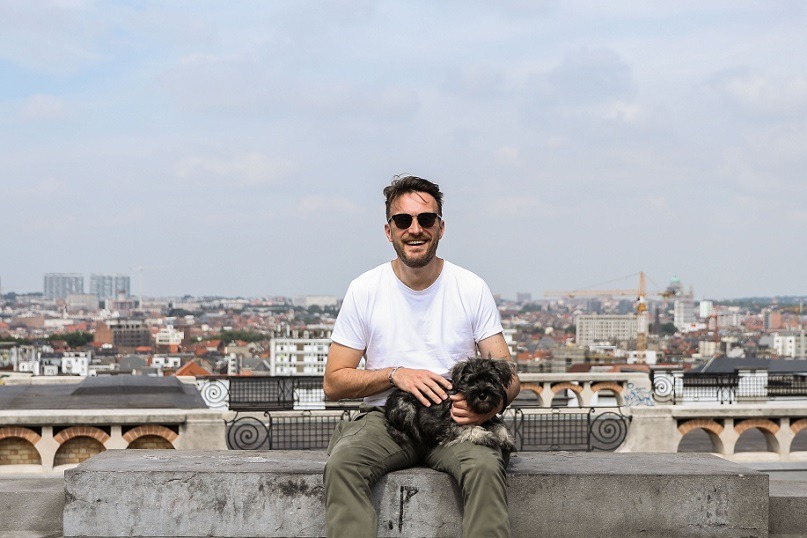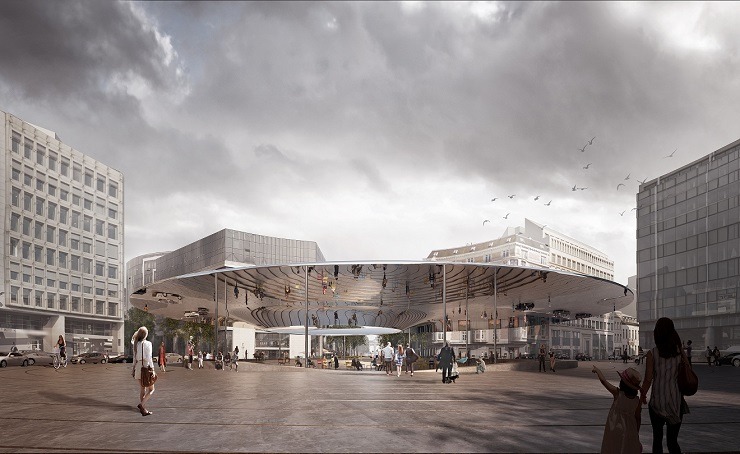For someone visiting or driving in Brussels, the city appears to be a seamless urban area without boundaries. Although they differ in architecture and population and may look like separate towns or even villages, the visitor still feels that they belong to one city. In reality however, Brussels, with a total population of 1.2 million inhabitants, is divided into 19 municipalities or communes with populations ranging from about 20,000 to over 170,000. Each has its own administration, with a mayor and a local municipal council, and manages, among others, schools, social services and tax collection.
The division of Brussels into municipalities sets it apart from other capital cities in Europe, which have expanded in modern times and incorporated neighbouring rural municipalities. A municipal reform took place in 1977, when the number of municipalities in Belgium was drastically reduced, but it did not affect Brussels.
According to philosophy professor Philippe van Parijs, himself a Brusseler, this has to do with Belgium’s federal system. In 1989, Greater Brussels with its 19 municipalities was given the status of region (Brussels-Capital Region), on par with Flanders and Wallonia, with its own directly-elected parliament and government.
The Dutch-speaking minority in Brussels was given guaranteed representation in the parliament. Any change in the local administration and transfer of powers to the regional level might therefore affect the delicate balance between the French- and Dutch-speaking communities in Brussels. Until now this has blocked any structural reforms to its complicated administrative structure.
But this did not deter Pascal Smet, minister for mobility and public works in the regional government in Brussels, from proposing a radical vision of a “one Brussels” in the future. He is not afraid to challenge old concepts and use colourful language to make his point. Last December, he aroused a lively debate by comparing Brussels to a prostitute because of its many contrasts, beautiful and ugly at the same time.
The comparison worked as trigger for people to learn more about his vision for Brussels but was obviously also used as a pretext by some politicians to denounce it. He had to apologize for the comparison but is still convinced that good ideas cannot be stopped. The Brussels Times spoke with him to discuss his vision.
He belongs to the Flemish Socialist party and was a municipal councillor in Beveren, a small town in East Flanders, before he entered politics on federal and regional levels. He has held his current ministerial post since 2014. Why did he become a politician and what motivates him to continue his political work? Brussels obviously has a lot to do with his career choice.
“I have been interested in politics almost since childhood, although I never liked political gaming or bargaining. By growing up in a working class family, I became aware of social issues and wanted to contribute to helping people and improving society”, he replies.
“What always mattered to me was working according to a vision. My first engagement was against nuclear weapons. I became later engaged in the asylum issue in Belgium and ended up as Commissioner-General for Refugees and Stateless Persons in Belgium (CGRS). After that I thought that I had enough of politics and moved to Brussels to focus on my private career.
“But when I was asked by the Flemish Socialist party to return to politics, I couldn’t refuse. There were so many things in Brussels that I wanted to improve in order to increase the quality of life for the citizens. Brussels motivated me to enter politics again.”
He expresses his relation to Brussels in one word – love. By that he means that we all need to take good care of the city for the sake of all people living in it. The city is slowly changing for the better, and has definitely improved over the last 20 years, when he first moved here. People are becoming prouder of Brussels, but there is still a lack of public space for people to interact.
How would he describe the main points of the proposal?
“In a nutshell, I propose to transform Brussels, from a city divided into 19 municipalities with a bloated bureaucracy and more than 1,000 politicians, to one city with a more effective administration, coherent policies in all areas and streamlined services”, he replies.
He was inspired by other national and regional capital cities like Vienna and Berlin, which have more inhabitants than Brussels but manage to provide good services with much fewer politicians. The idea is to abolish the artificial and costly duplication of municipal and regional administration and replace them by one administration in charge of one city, Brussels. The current regional parliament will become a city council for all of Brussels.
In his proposal, Pascal mentions that it is time to put an end to “surrealism” in Brussels. By this he means for example that inhabitants cannot use their residence permit to park on the other side of their own street just because it happens to be in another commune. Residents have to go through a bureaucratic paper mill each time they move to another commune in Brussels. Examples like these abound and can drive people crazy.
Pascal leaves no doubt that his vision of one Brussels literally means the end of the 19 municipalities. In his visionary Brussels, there will be one mayor for the whole city. Today, neither the regional government nor the communes have exclusive responsibility for any policy area.
“When it comes for example to transport or mobility, I share the responsibility with 19 other council members (aldermen). This results in diluted responsibility and a situation in which no-one takes real responsibility”, he says.
According to Pascal Smet, the communes should be replaced by neighbourhoods or district councils, which would be in charge of specific local issues. There will be local offices for social services and police. It would be enough to elect three officials in direct elections in each district. To avoid party-politics the council, members should be appointed by a lottery mechanism.
The district councils would focus on setting policies, supervising the work carried out in the district and manage appeals against local decisions. Far from reducing active citizen participation in local affairs, he believes that it will contribute to more social cohesion.
Brussels-Capital Region is already responsible for waste management and public transport. In his vision, all major functions will be carried out by one united Brussels. This will for example have a visible effect on the police apparatus. The consolidation of the police into six police districts was a step in the right direction but they are still too many, resulting in a duplication of management and staff functions.
“If for example New York can manage with one police force, Brussels can surely also do it too”, he says. “Making one police district for all Brussels would release more police officers to patrol the streets, closer to the residents. We already have police on bikes and should invest more in them. We also need to ensure that the police force reflects the diversity of the city’s population. Now many of them don’t even live in Brussels and commute from other parts of the country.”
Air pollution is another issue, which would benefit from the reorganization. Pollution does not stop at the commune border. “I think that the introduction of the low-emission zone as of this year is a good start, but it’s not enough and will gradually become stricter. I’m also considering a congestion toll for entering the city centre.”
He thinks that there are too many cars in Brussels at the expense of people. He believes this will change by investing in smart mobility. “If you drive less than 10,000 km per year, it’s not worth buying and owning a car and you are better off sharing it with others. On average, cars are parked 95% of the time in Brussels. That’s why we are investing in car-pooling and car-sharing. We want also to encourage electric cars by deploying a network of recharging stations in Brussels.”
According to his perspective, current differences in incomes and socio-economic levels between communes will be reduced. Asked whether there is a budget to finance his vision, Smet makes some overall estimates. The total revenue for both the regional government and the 19 municipalities from taxes and fees are around €9.4 billion per year. That’s a lot of money for a city the size of Brussels.
“By the reorganization to one Brussels we estimate that about 10% or almost €1 billion can be saved through economies of scale and better synergy. That’s money that can be invested in welfare and in reducing the economic gap between different parts of Brussels. The current equalization mechanism for redistributing revenues from richer to poorer municipalities isn’t effective since the redistribution is politicized and not done on objective socio-economic criteria.”
His own party fully supports his proposal. “This will take time and it’s difficult to say when the vision becomes reality. Ordinary citizens support it but there is opposition in other political parties, although it’s gaining support also among them. Basically it’s a power issue and a generational issue. Let’s first start a debate and then decide on whether the proposal should be put to a referendum.”
The current municipal-regional model in Brussels is an example of local self-government but may very well have become outdated and an obstacle for the development of Brussels, with its unique character. That said, it could possibly serve as a model for other country capitals with a mixed population of different nationalities.
To close we saved the most difficult question for last: as a local Brusseler what is his favourite Brussels bar and which neighbourhoods are closest to his heart in the city? Pascal answers without hesitation that he likes to eat at La Table de Mus and that he enjoys living in his neighbourhood – Saint Catherine and the Antoine Dansaert quarter. “It’s a vibrant and diverse neighbourhood with many young people in the middle of the city.”
| Redesign of Schuman Square
“It’s not really a square”, says Pascal Smet. “It’s the most filmed roundabout but also one of the ugliest in Europe.” Although not part of his one Brussels vision, the planned redesign of the square is a good example of the difficulties in city planning, which affects more than one municipality and a harbinger of what the implementation of the vision can mean for Brussels. An international competition for redesigning the square was launched in December 2015, resulting in more than 20 proposals. The winner was submitted by two architecture firms, COBE from Brussels and BRUT from Copenhagen. After the necessary work permits have been issued, work is planned to start in the first half of 2019. The total budget is approximately 8 million euro. The new square will be transformed into a large pedestrian zone and will include a modern steel structure where visitors and residents can spend their time. Pedestrians will be able to walk all the way from Cinquantenaire Park to the square without having to wait at a traffic light. Car traffic is expected to be significantly reduced. Cars will still be allowed to pass along the square but not to drive across or around it. |
By Mose Apelblat


